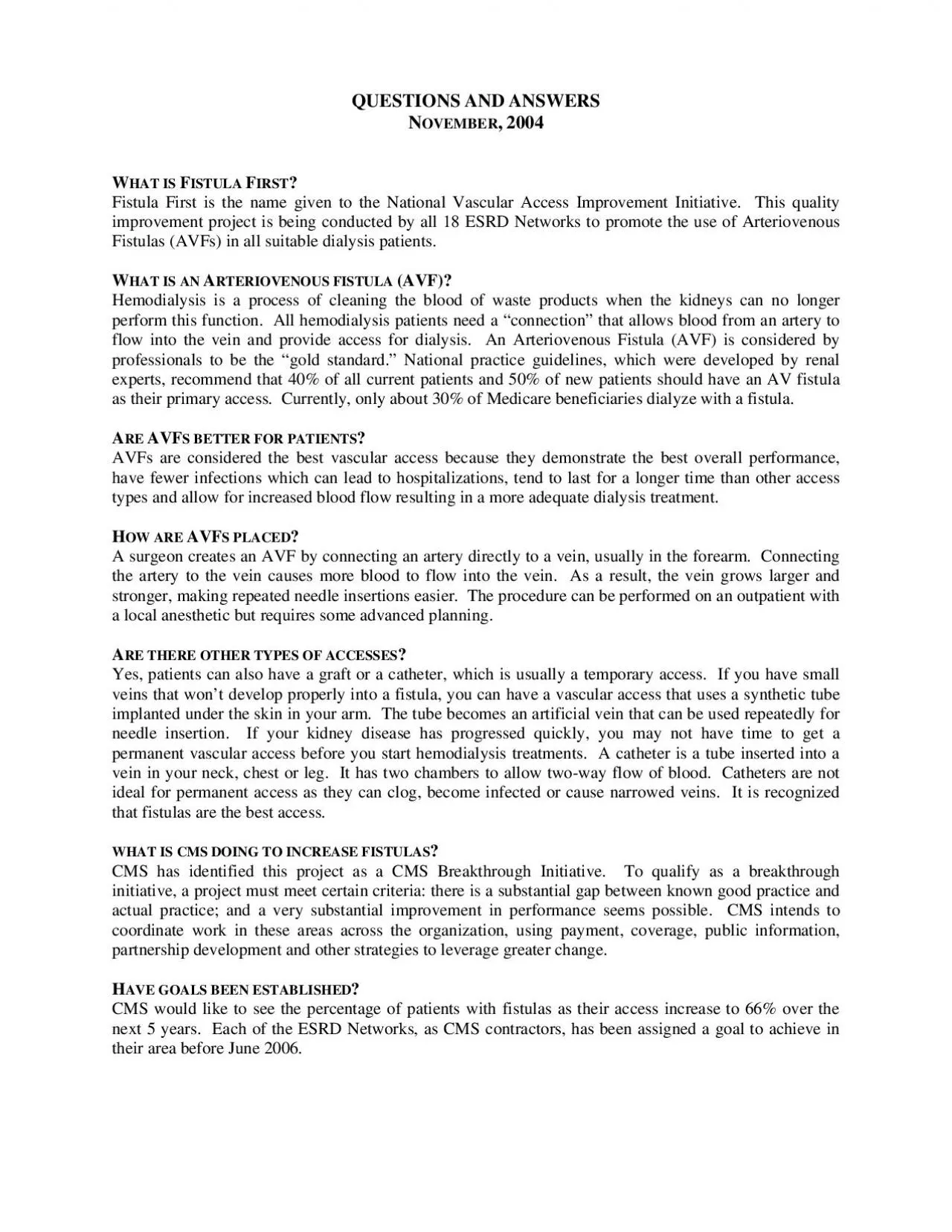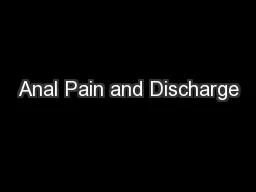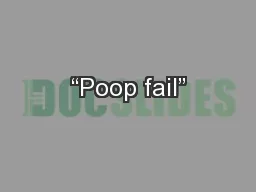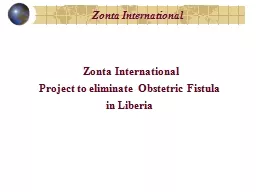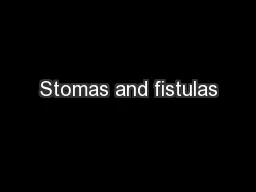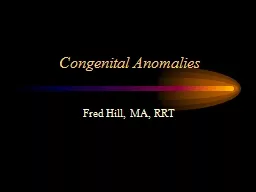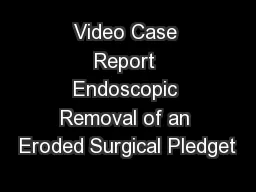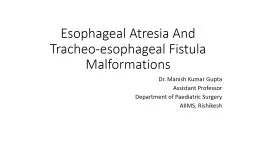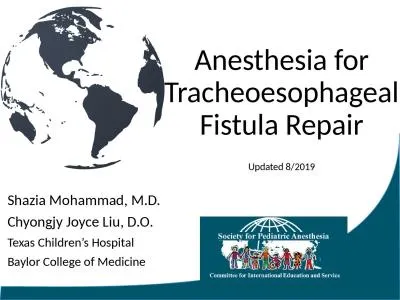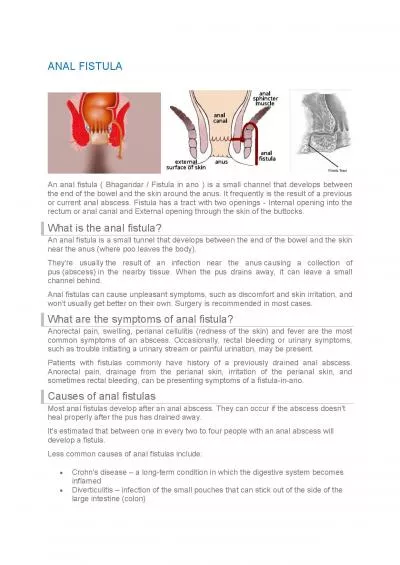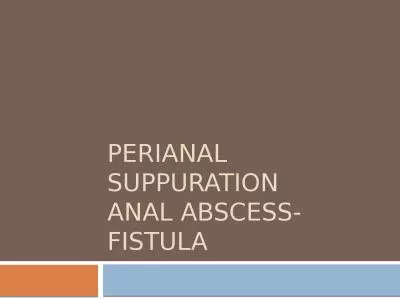PDF-RTERIOVENOUS FISTULA
Author : okelly | Published Date : 2022-09-22
Hemodialysis is a process of cleaning the blood of waste products when the kidneys can no longer HOW ARE AVFS PLACED A surgeon creates an AVF by connecting an artery
Presentation Embed Code
Download Presentation
Download Presentation The PPT/PDF document "RTERIOVENOUS FISTULA" is the property of its rightful owner. Permission is granted to download and print the materials on this website for personal, non-commercial use only, and to display it on your personal computer provided you do not modify the materials and that you retain all copyright notices contained in the materials. By downloading content from our website, you accept the terms of this agreement.
RTERIOVENOUS FISTULA: Transcript
Download Rules Of Document
"RTERIOVENOUS FISTULA"The content belongs to its owner. You may download and print it for personal use, without modification, and keep all copyright notices. By downloading, you agree to these terms.
Related Documents

